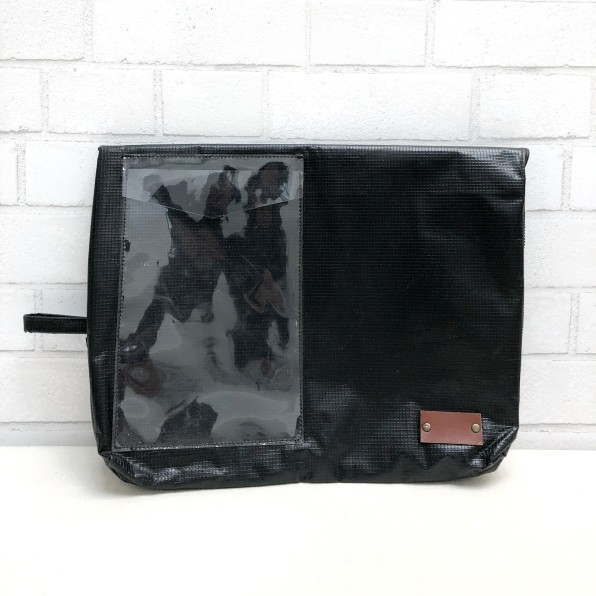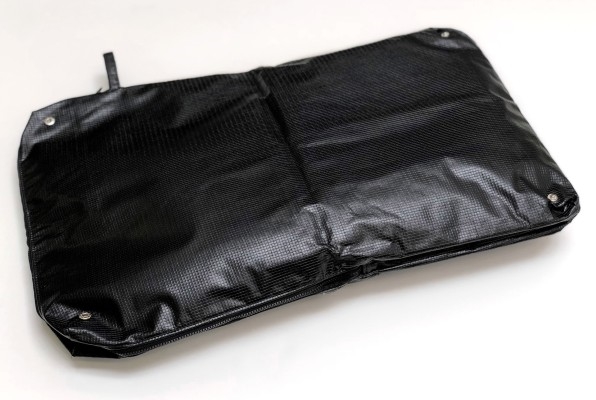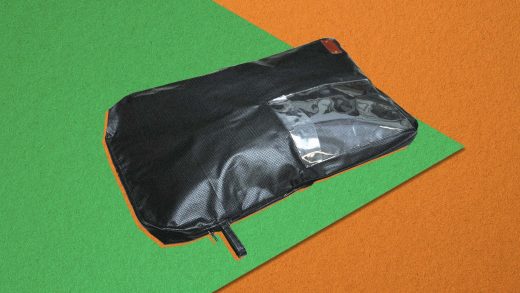Can Online Retail Solve Its Packaging Problem?
If you order a T-shirt or hoodie from an online store called Toad & Co, the checkout screen now has an extra button that says “reuse.” Choose it, and your order will arrive in a reusable package. When you take your clothing out, you flip the label around and put the bag back in the mailbox instead of in the trash, so the company can use it again for the next customer.
The company is the first to pilot the new packaging system, made by a startup called LimeLoop. The startup estimates that each lightweight, waterproof pouch–made from durable vinyl recycled from billboards–can be reused as many as 2,000 times, with cleaning and repairs along the way, replacing as many boxes or plastic bags. LimeLoop will work first with apparel companies, but plans to scale up to tackle the larger challenge of packaging from online shopping in general.

It’s a problem that some in the recycling business have called the Amazon Effect (not to be confused with other “Amazon Effects” on retail jobs or groceries or urban planning). In San Francisco, as the local recycling business struggled with growing piles of materials from online orders–from Amazon to meal kit companies–the city was forced to raise garbage rates.
Amazon shipped more than 5 billion items worldwide last year through Prime alone. LimeLoop used data from USPS, FedEx, and UPS to estimate that around 165 billion packages are shipped in the U.S. each year, and then roughly calculated that the cardboard used would equate to more than 1 billion trees (this calculation didn’t account for the fact that some packaging is not made from paper or cardboard, but it gives a sense of scale). As online shopping continues to grow, so will the impact.
Few companies have tried to shift to reusable packaging for shipping. In 2010, eBay tested a reusable, trackable cardboard box, but the short pilot soon ended (eBay had no comment on how it evaluated the program or why it was discontinued). Rent the Runway–with a business model that makes reusable packaging particularly logical, because clothing is returned by design–ships the majority of its orders in its patented reusable garment bag.

“We have not seen as much interest in reusable packaging from industry as might be expected,” Kelly Cramer, senior manager at GreenBlue, an environmental nonprofit, wrote in an email. For a reusable packaging scheme to work, current infrastructure would have to change. “In speaking with some retailers and brands about reusable packaging from an e-commerce perspective, they indicated that doing so would require that fulfillment infrastructure be reconfigured–to what extent is unclear. For example, traditional brick-and-mortar retailers who ship online orders from their stores do not currently have space in back of house today to store reusable packaging.”
The flow of fulfillment processes would have to change. “Right now, speed and efficiency are the primary drivers of e-commerce–companies are just trying to keep up,” she says. “Packaging solutions that arguably compromise either of these drivers may limit adoption, although other drivers like consumer perception and sustainability could make brands more open to it in the future.”
When she spoke with one large national carrier, Cramer says that another concern they expressed was the challenge of getting consumers to actually send packaging back; if that doesn’t happen, the economics might not work out. If the whole system isn’t carefully designed–if picking up packaging requires extra trips to someone’s house, for example, using extra fuel–there could be new environmental impacts. Still, Cramer thinks that reusable packaging may be becoming more viable.
“[T]he success of subscription services, the growing sharing economy, and changing social values mean that reusable packaging isn’t as ‘far-fetched’ as it may have seemed some years ago,” she says. “Further, brands are becoming more agile and open to disruption, so I would not be surprised if some are experimenting with reusable packaging now as a pilot, even if we aren’t aware.”
In Europe, a company called Repack supplies reusable bags to online retailers using a similar model as LimeLoop. The packaging, designed to flatten easily, can be dropped back in the mail, and Repack pays the return cost. When the bag is returned, customers typically get a discount on their next purchase, increasing sales for retailers as it gives customers an incentive to remember to return the package. Others online stores are exploring incentives like planting a tree for each returned package.
Repack has around 40 customers now and says that demand quickly grew over the last year. “[The] circular economy as a concept made a breakthrough, followed by mass media picking up packaging waste,” says Jonne Hellgren, the company’s CEO. “Many e-commerce companies see that packaging waste is impacting customer behavior now and especially in the future. Packaging has become a strategic question, and companies are searching for solutions as they are looking to future-proof their businesses.”
In the U.S., LimeLoop hopes to quickly expand, eventually moving beyond clothing–which is relatively easy to ship in something other than a cardboard box–to other products. It plans to announce partnerships with larger brands in the coming months. “We’re looking at this as a full-circle solution for all industries,” says founder Ashley Etling.
(45)



